I’d just as soon leave binoculars and camera at home than head afield without field guides.
I know some now prefer apps: they’re undoubtedly lighter and even allow you to hear bird songs. (And you can check out birder Tim Boucher’s favorite bird apps in our previous blog).
But I still prefer an old-fashioned paper field guide. I love paging through the (often beautiful) illustrations, using the books not only to identify species but to plan future adventures.
Roger Tory Peterson created the first modern field guide in 1934, Guide to the Birds. Before that, naturalists relied on complicated scientific keys. Peterson’s field guide changed natural history and made birding a hobby anyone could enjoy.
Today, field guides exist in an almost mind-boggling variety, covering just about any flora or fauna you’d like to identify.
These guides now take innovative approaches to natural history. Here are ten recent favorites. I’ve focused on North America for this blog, with guides appropriate for a range of skill levels and interests.
Let me know your own favorites in the comments section.
-
The Sibley Guide to Bird Life & Behavior
Illustrated by David Allen Sibley. (Knopf)
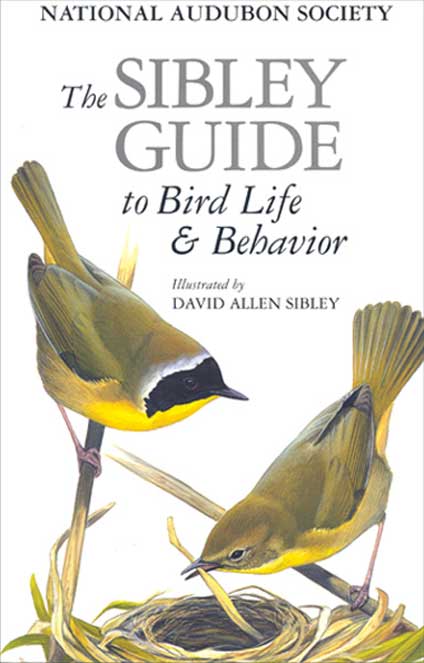
“Life listing” birds can have an unfortunate side: it can reduce birds to mere tokens to be “ticked” in a competitive game. Obsessive birders race around just to notch the most sightings; at its most extreme, it seems to have very little to do with birds.
This guide – a companion to the popular Sibley Guide to Birds – offers a remedy. It’s a guide to what birds do, encouraging observation of behavior and habits.
It includes information on taxonomy, food and foraging, breeding, migration and conservation. And it will help you find birds: a lot of the information is loaded with useful tips on where to look for bird species at different times of year.
-
Hummingbirds: A Life-Size Guide to Every Species
By Michael Fogden, Marianne Taylor & Sheri L. Williamson. (Harper Design)
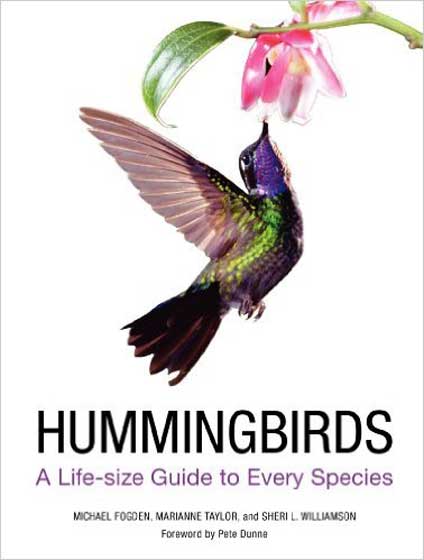
I’m not sure if this is a small coffee table book or a field guide. What earned this one a place on this list is its novel approach – the hummingbirds are pictured life sized.
These smallest of birds lend themselves to such an approach. It covers all the hummingbirds of the Americas, so it could serve as a guide when going to a hummingbird-rich hotspot like Southeast Arizona or Ecuador.
But it’s also a visual feast, creating a nice reference and a nice book to page through on a wintery evening.
-
The Warbler Guide
By Tom Stephenson & Scott Whittle. (Princeton University Press)
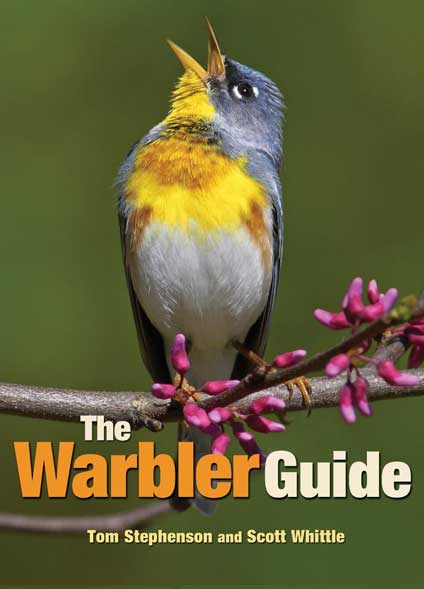
Even for experienced birders, warblers are difficult to identify. Standard field guides just don’t have enough space to provide all the plumage variations and differences among juveniles and adults.
This comprehensive book provides just about any view of the 56 North American warblers that you can imagine.
It represents a useful new approach to birding guides – comprehensive and specific guides that help birders identify particularly difficult groups of birds. There are now guides for shorebirds and raptors and even gulls. If you’ve reached that point in your birding career, these guides can be indispensable.
-
Squirrels of North America
By Tamara Eder. (Lone Pine Publishing)
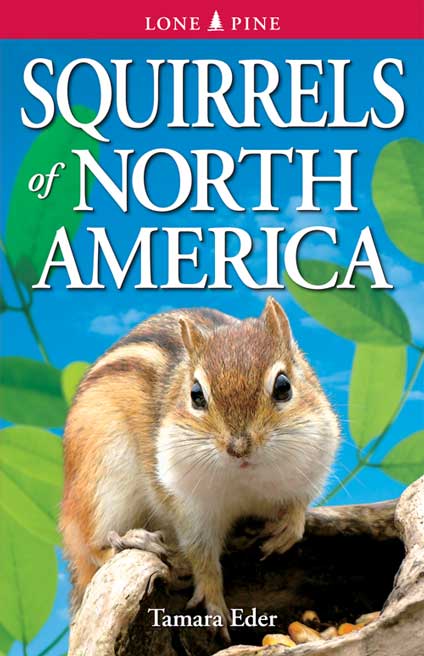
A field guide to squirrels? What could be so difficult about identifying these backyard rodents?
Actually the North American squirrel family – which includes tree squirrels, ground squirrels, flying squirrels, chipmunks, prairie dogs and marmots – represents 35 species. Many are found in some of the most scenic and iconic landscapes in the United States.
Many mammals are nocturnal or highly elusive, which can make keeping a “life list” very difficult (although even that doesn’t deter some enthusiasts). But squirrels are active and highly visible during the day.
To see all the squirrel species in this book would take you to many of North America’s great national parks and mountain ranges, from Utah’s canyonlands to the Olympic rainforest to Rocky Mountain peaks. And beyond.
-
Peterson Field Guide to Freshwater Fishes
By Lawrence M. Page and Brooks M. Burr. (Peterson Field Guides)
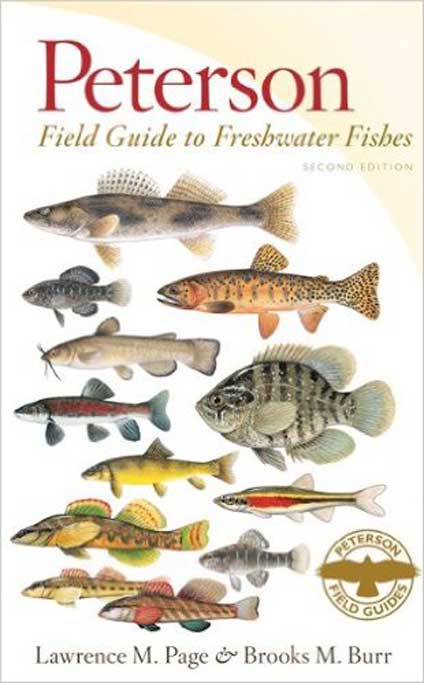
Increasingly, conservation-minded anglers recognize that a sport fishing mentality emphasizing just a few game fish – brown trout, rainbow trout, largemouth bass – has devastated native fisheries and aquatic habitats.
Many anglers now recognize that all native fish species have value, and keep life lists of species caught. There are “microfishers” who focus on minnows and other tiny fish, and “rough fishers” who seek out species of sucker and gar.
Other enthusiasts don’t even catch the fish – they observe them underwater via snorkeling.
Whatever the case, this book is the best source I’ve found to help you identify this amazing freshwater diversity. Expand your angling horizons and start seeking out the native fish in your area – all far more fascinating than stocked hatchery fish.
-
Dragonflies & Damselflies of the Rocky Mountains
By Robert DuBois. (Kollath & Stensas Publishing)
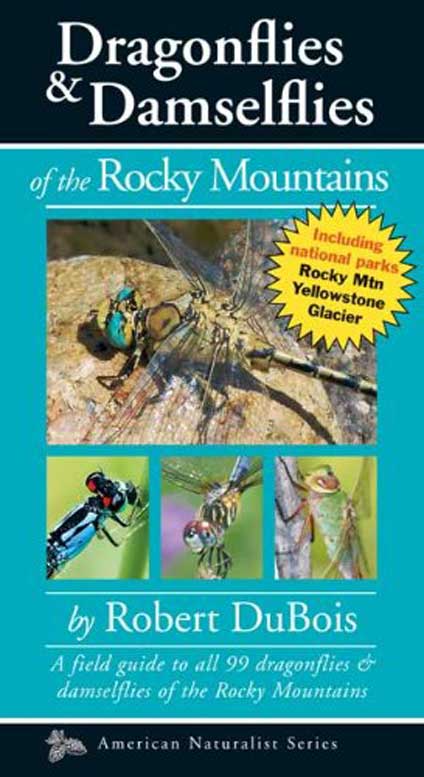
Dragonfly spotting has been called the new birding. Dragonflies are charismatic, they undergo similarly long migrations and they are often found in the same places as birds.
There are a number of excellent dragonfly spotting guides. I chose this one because it’s the one I use for my backyard and surrounding areas in Idaho.
It includes excellent photographs as well as key identification features. The Princeton Field Guides Dragonflies and Damselflies of the East is similarly excellent. There are also a number of state-specific guides. For birders, Dragonflies through Binoculars applies bird ID techniques to dragonflies.
So you have many options to help identify these charismatic insects. Pick one and head to your nearest marsh.
-
Field Guide to Grasshoppers, Katydids and Crickets of the United States
By John L. Capinera, Ralph D. Scott & Thomas J. Walker (Comstock Publishing Associates)
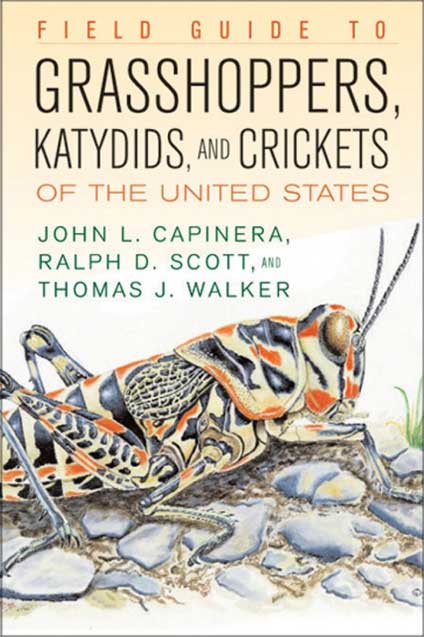
Crickets and katydids are the evening summer soundtrack for many of us. And there are even interesting citizen science projects around identifying the different katydid calls.
But really, let’s be honest: If you have this title on your shelf, you are either (a) a professional entomologist or (b) on the lunatic fringe of wildlife watching.
Still, if you must know what that grasshopper is hopping away, why not go all in and get this comprehensive guide?
You’ll amaze (or alarm) your friends, and besides, this is a well-done guide with full-color identification of 56 species, as well as information on ecology and behavior.
-
Falcon Nature Guides to National Parks
By Ann Simpson and Rob Simpson. (Falcon Guides)
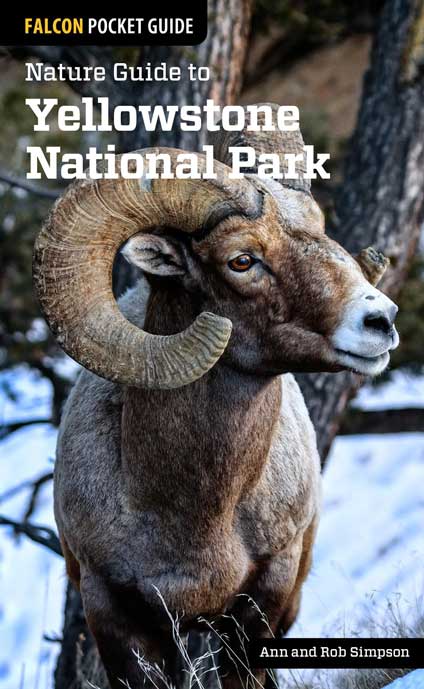
Say you’re heading on a family vacation to a national park. What field guides do you bring? Birds, wildflowers, mammals, reptiles? If you have varied interests, pretty soon you can have a whole library bogging down your daypack.
A new Falcon Guide series helps solve this problem with a field guide to all the common flora and fauna of specific national parks. Current titles are available for Shenandoah, Yosemite, Sequoia & Kings Canyon, Rocky Mountain and Yellowstone national parks, as well as the Blue Ridge Parkway.
These books probably won’t work for the serious life lister, focusing on rarely seen shorebirds or elusive nocturnal mammals. But they provide a great overview for a family vacation, enabling you to identify most of the creatures you’re likely to see.
-
Bison: A Falcon Pocket Guide
By Jack Ballard. (Falcon Guides)
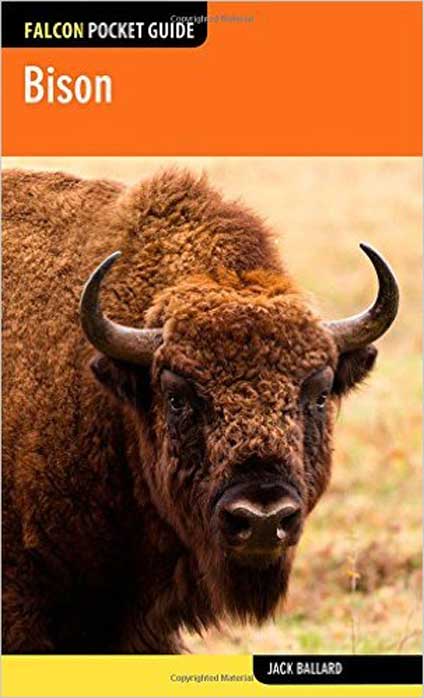
This is another interesting approach from Falcon Guides: a field guide to individual species. In addition to bison, the series includes guides to black bears, grizzlies, mountain lions, bighorn sheep and moose.
Many of these are species you’ll see on national park visits. What I like about this approach is that it encourages park visitors to stop and observe, rather than snap that bison photo and rush onto the next sighting.
The book includes detailed information on the behavior you’re likely to see while observing the herds at Yellowstone’s Lamar Valley or a Rocky Mountain meadow.
Few people have spent as much time photographing and observing these critters as Jack Ballard, so the slim volumes are packed with useful details.
-
Wildlife of North America: A Naturalist’s Life List
By Whit Bronaugh. (University Press of Florida)
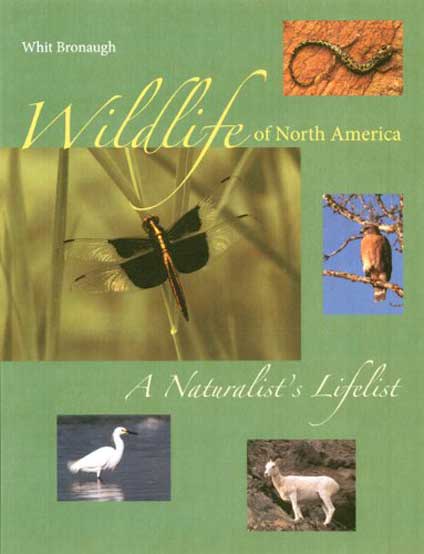
Finally, here’s a book to help you track all the interesting species you’ve seen using the guides above.
This massive tome is about as far from a handy field guide as you can get.
But it is a complete reference (and check list) of the species you’d commonly track on life lists: birds, mammals, reptiles, amphibians, freshwater fish, butterflies and dragonflies. It also includes space for notes on each sighting.
If you’re serious about listing, it offers a useful, old-school format to track your sightings.
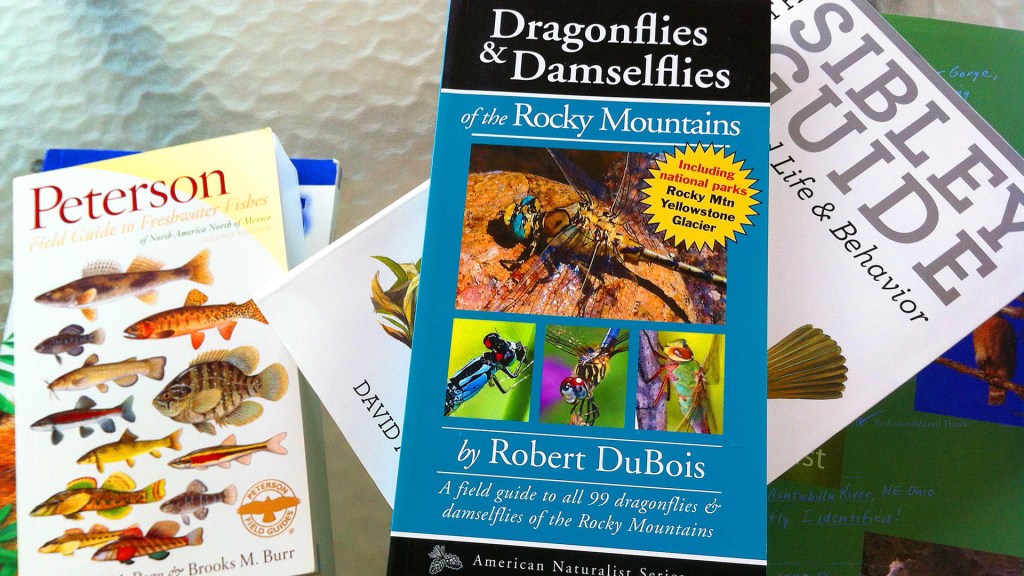



Newcomb’s Wildflower guide
Tiner Field Guide to Coastal Wetland Plants of the Northeastern United States
These two were lifesavers during college! Love the Sibley guide too!
Oh and my favorite online dichotomous key… https://gobotany.newenglandwild.org/
Love the Sibley. And a squirrel guide! That’s a new one for me. I will have to check it out.
I grew up with a Stokes Field Guide to Birds of North America. Heartbroken when I lost it! But it was always handy when someone unusual made an appearance in the back yard (like a peregrine falcon who had caught a pigeon and was eating it on a branch near the house!).
gud work
For addressing the title of specifically field guides here are a few of my favourites:
-Beetles of NA by Evans
-Sibley Field guide to birds (either east/west or all of NA)
-Sibley Field Guide to trees of NA
-Forest plants of central Ontario by Chambers (pretty region specific)
-Butterflies of NA by Kaufman
-Mosses of Northeast by McKnight
-Amphibians and Reptiles of the Great Lakes region by harding
Those are just a few of my favourite ones but as for the serious aspect of this article here are what I call the best in their class although they are less field guide based and more manuals to be used on your own time outside of the field after specimens have been collected. They also all feature dichotomous keys which is essential for any serious naturalist.
-Dragonflies of NA by Needham (there is also a damselfly version) one of the best guides I’ve ever seen, although very hard to get ahold of and quite pricy (easily worth the price). This guide can also help you identify any nymph to species level with phenomenal keys. Easily the best in its class. Also has amazing pictures in keys.
-Manual of Vascular Plants by Gleason (southern ontario-michigan region mostly) This is another amazing but quite pricy book. It is simply amazing though and the best in its class for proficient ID. Once again important to note only for advanced/serious naturalists as it has 0 pictures unless you buy the accompanying illustrated guide. (Flora of alberta by moss is similar in quality but specific to AB region
-Also on another note my favourite books for wild edibles are easily The Foragers Harvest and Natures Garden by Thayer (could not recommend these enough for anyone interested in wild edibles)
-Lichens of North America by Brodo. Simply a masterpiece. I dare you to find a review that is not good. Once again though very advanced and quite pricey.
Once again these are just a select few there are tons out there for every order,family, genus or even just species. Also my collection is far away from where I am right now and I could easily write pages on the top guides/manuals. If you have any questions about any of them or any field guides on specific topics feel free to ask or feel free to suggest more options. Finally not all the titles I put are exact and I may have spelling mistakes in authors names so sorry for that.
I second the Beetles of North America!!!! (notice all the explammation marks?)
With there being so many species of arthropods in the world, you really need a good field guide that focuses in on a particular order, such as beetles, dragonflies, butterflies.
Explammation? Doh!
love both the Sibley guides. Also really like yhe Crossley guide
An Eclectic Guide to Trees East of the Rockies and Weeds of the Woods, both by Glen Blouin and Forest Trees of Maine: Centennial Edition by the Maine Forest Service for trees and shrubs. Marine Life of the North Atlantic: Canada to New England by Andrew J. Martinez. Bird of North America Golden Guide. Those are my favorites, and as a park ranger in Maine, they’re all in use all the time.
I thought the addition of one of Crossley’s ID guides would have been nice like this one on Raptors: http://press.princeton.edu/titles/9966.html
Talk about new and different approaches!
I also like the new Beetle book that’s out: http://press.princeton.edu/titles/10218.html
My favorite field guide is Sibley’s Eastern Birds – my very used and tattered book is a testament to how much I carry it in the field, even when in my local haunts. It’s great to show people on the trail what bird you’re looking at.
Butterflies of the East Coast is one of my favorites. It’s a larger format book that, amid the typical species accounts, has great essays that put species groups, habitats and conservation issues in context.
http://www.amazon.com/Butterflies-East-Coast-Observers-Guide/dp/0691090564
I’m disappointed that neither of the Peterson Field Guides to Reptiles aren’t on here.
George,
Thanks for the comment. I own both Peterson reptile guides, and the eastern edition was one of the very first field guides I owned as a kid. And I regularly carry/consult the western edition now. There wasn’t enough room for every field guide. I have received many great recommendations so may do another blog on more great field guides.
Flattering though it may be, at least as far as my minimal contribution to the book goes, I was shocked to see Hummingbirds: A Life-Size Guide to Every Species included in a list of field guides.
This book illustrates less than 80% of the world’s hummingbird species, the rest (including extinct species) being covered in text only. Most are represented by a single photo, including many species in which males and females are dramatically different. Even the “Life-Sized” claim doesn’t hold up, as illustrated by the tiny Rufous Hummingbird appearing larger than the enormous Sword-billed (which would have been a great candidate for a foldout).
Though it makes a nice addition to the coffee tables and bookshelves of hummingbird enthusiasts and general nature lovers, I sincerely hope that people won’t buy this book expecting an identification guide.
Sheri, in part what I hoped with the blog was to show new & different approaches. Some reference books have also used a field guide format even though you may not carry them in the field on an outing. Another title I originally had — Princeton’s Carnivores of the World — uses field guide format. I doubt many carry it on a trip, but it would be a help in sorting out, say, a confusing mongoose sighting. So…it is a reference but also helps sort out a field sighting. I am sure many of us have multiple guides/references to help sort out confusing species. I included the Hummingbirds for the novelty.
Peterson’s Field Guide to Wildflowers (of Northeastern and North-central North America, Mckenney and Peterson)
also their one to Trees and Shrubs (Petrides and Peterson)
Lauren Brown’s Weeds and Wildflowers in Winter.
Surely you know of one or two about plants? The list in the article/post is not about “nature” but just animals.
Thanks Eve. Yes, I know the list neglected plants. There are so many field guides to choose from, and this list in part represents my own interests. I plan a second edition of this blog that focuses on field guides to plants, fungi, etc.
So agree about the Sibley Guide to Bird Life and Behavior! I wish there were more volumes like this. I do hope you follow up with more field guides. I’d like to chime in for plants and mushrooms–Audubon’s Field Guide to Mushrooms is great, as is the Sibley Guide to Trees. And there are some great local guides–101 Trees of Indiana is a wonderful book. Also, Nests, Eggs, and Nestlings of North American Birds has a special place in my heart for its emphasis on ethics in nature appreciation. What a great post and great comments. Will definitely check some of these out.
I love Insects: Their Natural History and Diversity- this tome is very useful for identifying everything with six legs! I use it also when studying insects for painting!
Insects: Their Natural History and Diversity- this tome is very useful for identifying everything with six legs! I use it also when studying insects for painting!